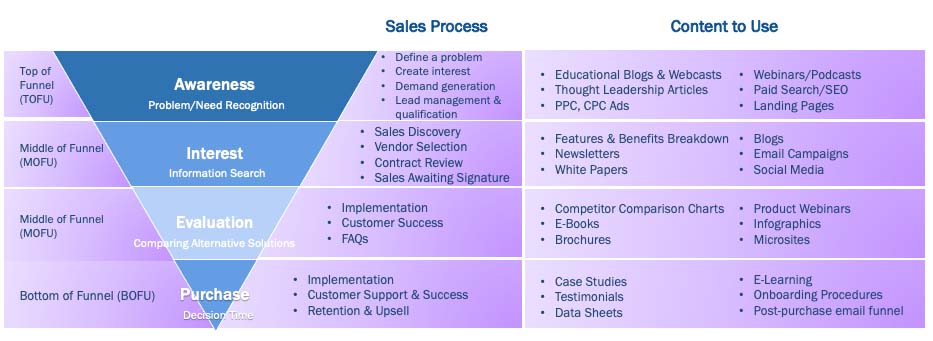Understanding the Importance of Digital Marketing for SaaS Companies
In today’s internet-driven world, having a strong online presence is crucial for the success of any business, especially for SaaS companies. Digital marketing has become an essential component in reaching and engaging with target audiences, driving conversions, and ultimately increasing revenue. Understanding the importance of digital marketing for SaaS companies is key to staying competitive in the ever-evolving digital landscape.
One of the main reasons why digital marketing is so important for SaaS companies is that it allows for targeted and personalized marketing strategies. With the ability to track and analyze user data, SaaS companies can create highly targeted campaigns that resonate with their specific audience segments. This level of personalization not only increases the chances of conversions but also helps build brand loyalty and trust among customers.
Email marketing is a powerful tool for SaaS companies to engage with their customers and drive conversions. By creating personalized and relevant email campaigns, SaaS companies can nurture leads, upsell existing customers, and promote new products or features. Implementing effective email marketing strategies can significantly increase customer retention rates and lifetime value, ultimately leading to higher revenue and growth for the company.
Social media has become a crucial platform for SaaS companies to connect with their target audience, build brand awareness, and drive traffic to their website. By leveraging social media marketing tactics such as targeted ads, influencer partnerships, and engaging content, SaaS companies can reach a wider audience and generate leads. Developing a strong social media presence is essential for SaaS companies to stay top-of-mind with customers and maintain a competitive edge in the market.
Ultimately, understanding the importance of digital marketing for SaaS companies is essential for achieving growth and success in today’s competitive landscape. By implementing email marketing strategies, social media tactics, content marketing techniques, and paid advertising campaigns, SaaS companies can effectively reach and engage with their target audience, drive conversions, and ultimately increase revenue. With the right digital marketing strategies in place, SaaS companies can stay ahead of the competition and continue to thrive in the digital age.
Stay Informed: Sign Up for Our Blog
What is Digital Marketing?
Digital marketing refers to the use of online channels to promote and sell products or services. It encompasses a variety of tactics and tools designed to help businesses connect with their target audiences, grow their customer base, and increase sales. For SaaS companies, digital marketing is essential in reaching potential customers, nurturing leads, and converting them into long-term users.
Core Components of Digital Marketing
Digital marketing is like a toolbox with several key components. Each tool serves a unique purpose, and together, they help businesses create a comprehensive strategy.
Search Engine Optimization (SEO)
Search Engine Optimization (SEO) is the practice of optimizing your website to rank higher in search engine results pages (SERPs). It involves on-page tactics like keyword optimization and meta tags, as well as off-page strategies such as backlink building. When potential customers search for software solutions, you want your SaaS product to appear at the top of the results. Higher visibility leads to increased traffic and better chances of conversion.
Content Marketing
Content marketing focuses on creating and distributing valuable, relevant content to attract and engage a target audience. This includes blog posts, eBooks, white papers, and videos. For SaaS companies, effective content marketing can educate potential users about the benefits of your software and establish your company as an industry leader.
Social Media Marketing
Social media marketing leverages platforms like Facebook, Twitter, LinkedIn, and Instagram to promote your SaaS product. It’s essential for building brand awareness and engaging with your audience. With social media, you can share updates, create targeted ads, and interact directly with customers. This helps to build a community around your brand and can lead to higher customer retention rates.
Email Marketing
Email marketing involves sending targeted messages to a group of subscribers via email. It’s one of the most cost-effective ways to nurture leads and keep existing customers informed about new features or updates. Personalized email campaigns can significantly boost user engagement and conversion rates.

Image by: Canva Studio
Pay-Per-Click Advertising (PPC)
Pay-Per-Click (PPC) advertising allows you to place ads on search engines and other platforms and pay only when users click on them. It’s a quick way to drive traffic to your website, especially if you’re targeting high-intent keywords. With PPC, you can reach potential customers at the moment they’re searching for solutions similar to your SaaS product.
Understanding and implementing these core components of digital marketing can help your SaaS company thrive in an increasingly competitive market.
Unique Challenges of SaaS Marketing
SaaS companies face distinct challenges when it comes to marketing their products. Understanding these challenges is crucial for developing effective strategies to address them and achieve long-term success.
Long Sales Cycles
One of the defining characteristics of the SaaS industry is long sales cycles. Unlike more straightforward product sales, SaaS solutions often involve more complex decision-making processes. Potential customers need to evaluate whether the software meets their business needs, integrate it with existing systems, and ensure it will provide a return on investment. This process can take weeks or even months.
Digital marketing helps nurture leads throughout this extended sales cycle.
Here are a few ways digital marketing can assist:
- Lead Nurturing Campaigns: Utilizing tools like email marketing and personalized content can keep potential customers engaged over time. These campaigns can provide valuable information, case studies, and testimonials that address specific pain points.
- Retargeting Ads: These ads keep your SaaS product top-of-mind for potential customers who have visited your website but haven’t yet converted. By displaying targeted ads across multiple platforms, you can gently remind them of the benefits of your offering.
- Automated Workflows: Marketing automation tools can help streamline the lead nurturing process. With automated workflows, you can send relevant content to leads based on their behavior and interaction with your site.
High Churn Rates
High churn rates—the percentage of customers who cancel their subscriptions—are another significant challenge for SaaS companies. Retaining customers is crucial because acquiring new ones can be costly. If customers leave soon after subscribing, it can dramatically affect the company’s revenue and growth prospects.
Digital marketing strategies can drastically improve customer retention and loyalty:
- Customer Engagement: Regularly engaging with customers through email updates, newsletters, and social media keeps them informed about new features, updates, and benefits. It helps create a sense of community and involvement with your product.
- Feedback Loops: Encouraging and responding to customer feedback can enhance the user experience. Feedback forms, surveys, and customer service chatbots can collect valuable information that can be used to improve the product and address issues quickly.
- Loyalty Programs: Implementing marketing campaigns that reward long-term customers with discounts, exclusive content, or advanced features can incentivize retention.

Image by Andrea Piacquadio
A good benchmark for churn rate is 5–7% annually for established SaaS companies targeting enterprises, and closer to 5% per month for earlier-stage companies or those targeting SMBs. (Source)
Customer Education
Educating potential and existing customers about the SaaS product is crucial. Unlike physical products, software solutions often require users to understand how to use them effectively. If customers do not fully understand the value or how to utilize features, they may not stick around.
Content marketing plays a vital role in customer education:
- Educational Content: Blogs, webinars, and tutorial videos can provide in-depth knowledge about using your software. This content helps simplify complex features and demonstrates the value they bring to the user’s business.
- Knowledge Base: Creating a comprehensive knowledge base with articles, FAQs, and troubleshooting guides can help customers find answers to their questions independently. This reduces the burden on customer support teams and empowers users.
- Onboarding Programs: Structured onboarding programs that include step-by-step guides, interactive tutorials, and live Q&A sessions can help new customers get up to speed quickly and maximize their use of your product.
Understanding and addressing these unique challenges through tailored digital marketing strategies can significantly enhance the growth and sustainability of a SaaS company.
For more ideas on how to reduce churn rate, check out this article.
Core Digital Marketing Strategies for SaaS
For SaaS companies, digital marketing is not just an option; it’s a necessity. Successful digital marketing strategies can attract and convert leads, retain customers, and boost overall brand awareness. Let’s explore the core digital marketing strategies crucial for SaaS companies.
Content Marketing
Creating high-quality content is key to attracting and converting leads. Various types of content can effectively engage and educate your audience.
- Blogs: Writing informative blog posts helps establish your SaaS company as an industry thought leader. Blog posts can address common questions, share industry trends, and provide valuable insights.
- Whitepapers: These in-depth reports provide detailed information on specific topics. They help demonstrate your expertise and offer value to potential customers who are looking for comprehensive solutions.
- Webinars: Live or pre-recorded webinars can educate your audience about your product features and benefits. They also offer an interactive platform to answer questions and build a connection with potential leads.
Search Engine Optimization (SEO)
SEO plays a significant role in increasing organic visibility and driving traffic to your SaaS company’s website. By optimizing your site for relevant keywords, you can rank higher on search engine results pages (SERPs).
- Keyword Optimization: Identifying and using the right keywords in your content ensures that potential customers find your website when searching for solutions.
- On-Page SEO: This involves optimizing individual web pages to rank higher, such as using proper meta descriptions, header tags, and ensuring mobile-friendliness.
- Off-Page SEO: Building backlinks from reputable websites can greatly improve your site’s credibility and ranking.
Learn more about SEO strategies to drive traffic from this guide.
Pay-Per-Click (PPC) Advertising
PPC advertising provides immediate visibility and can quickly generate leads for your SaaS company. Here are some benefits:
- Quick Results: Unlike SEO, which can take time to show results, PPC can drive traffic almost instantly.
- Targeted Ads: You can target specific keywords that potential customers are searching for, ensuring high-intent visitors.
- Budget Control: With PPC, you only pay when someone clicks on your ad, giving you control over your advertising budget.
Social Media Marketing
Using social media platforms can significantly boost brand awareness, customer engagement, and lead generation. Platforms like Facebook, LinkedIn, and Twitter offer unique ways to connect with your audience.
- Brand Awareness: Regularly posting and engaging on social media helps keep your brand visible and top-of-mind for potential customers.
- Customer Engagement: Responding to comments, sharing user-generated content, and running interactive polls can foster community and loyalty.
- Lead Generation: Social media ads can target specific demographics, helping you reach potential customers who are more likely to be interested in your product.

Email Marketing
Email marketing is highly effective in nurturing leads and retaining customers. It’s a cost-effective strategy that can yield impressive results.
Personalized Campaigns: Sending personalized emails based on user behavior can significantly improve engagement and conversion rates.
Drip Campaigns: Automated email sequences can nurture leads over time, providing them with valuable content and information that leads to conversion.
Customer Retention: Regular updates, educational content, and special offers sent via email can help retain existing customers and reduce churn rates.
These core digital marketing strategies form the foundation of a successful SaaS marketing plan. Implementing them effectively can help your SaaS company attract new leads, convert them into loyal customers, and drive sustainable growth.

Image by Mikael Blomkvist
Metrics to Measure Success in SaaS Digital Marketing
Understanding the success of digital marketing efforts is crucial for SaaS companies. Measuring the right metrics can provide insights into what works, what doesn’t, and where to invest your efforts for optimal growth. Here are some key metrics to focus on.
Customer Acquisition Cost (CAC)
Customer Acquisition Cost (CAC) is the total cost spent on acquiring a new customer, which includes marketing and sales expenses. It’s calculated by dividing the total marketing and sales costs by the number of new customers acquired within a certain period.
Why is CAC crucial for SaaS companies?
Budgeting: Knowing your CAC helps in budgeting and allocating resources effectively. If your CAC is too high, you might need to revise your strategy to make it more cost-effective.
Sustainable Growth: High CAC can indicate unsustainable growth. By optimizing your marketing and sales strategies, you can lower CAC and achieve a healthier growth rate.
For more insights on CAC, check out this article on calculating and analyzing CAC.
Customer Lifetime Value (CLV)
Customer Lifetime Value (CLV) represents the total revenue a business can expect from a single customer account over the duration of their relationship. It considers factors like average purchase value, purchase frequency, and customer lifespan.
Importance of CLV in SaaS:
- Long-Term Profitability: CLV helps businesses understand the long-term profitability of their customers. A higher CLV indicates that customers are generating more value over time.
- Marketing Efficiency: When compared with CAC, CLV can show whether you’re spending too much or too little on customer acquisition. Ideally, your CLV should be significantly higher than your CAC.
- Retention Focus: Understanding CLV can shift your focus towards customer retention strategies, which are often more cost-effective than acquiring new customers.
For more about calculating CLV, you can visit this guide on customer lifetime value.
Conversion Rates
Conversion rates measure the percentage of visitors who take a desired action, such as signing up for a free trial or purchasing a subscription.
Tracking conversion rates across different stages of the sales funnel is essential for understanding your marketing effectiveness.
Significance of tracking conversion rates:
- Sales Funnel Optimization: By monitoring conversion rates at various funnel stages, you can identify where potential customers drop off and take steps to improve those areas.
- A/B Testing: Use A/B testing to optimize conversion rates. Small changes in landing page design, call-to-action buttons, or copy can significantly impact conversions.
- Resource Allocation: Higher conversion rates indicate more efficient use of your marketing budget, helping you allocate resources to the most effective strategies.
For tips on optimizing conversion rates, check this comprehensive guide.
Putting it All Together
By keeping a close eye on these key metrics—CAC, CLV, and conversion rates—you can gain actionable insights into your digital marketing efforts and make data-driven decisions. These metrics will help you not only understand your current performance but also predict future growth and make strategic adjustments to ensure long-term success.
Tracking these metrics consistently helps SaaS companies refine their marketing strategies, optimize budget allocation, and ultimately achieve sustainable growth.

Image by Canva Studio
Case Studies of Successful SaaS Digital Marketing
Digital marketing has been a game-changer for many SaaS companies, helping them scale and achieve remarkable growth. Here, we’ll explore a few case studies to illustrate how effective digital marketing strategies can drive success in the competitive world of SaaS.
HubSpot
In Brief: HubSpot, a leading inbound marketing and sales platform, has successfully leveraged content marketing to build brand authority and attract a massive user base.
Strategies Used:
- Content Marketing: HubSpot’s blog is a treasure trove of valuable information, attracting millions of visitors monthly. They provide free eBooks, guides, and toolkits that help users solve real-world marketing problems.
- SEO: They optimize their content for search engines, ensuring their resources rank high for relevant keywords.
Educational Webinars: Regular webinars provide in-depth insights into marketing strategies, helping potential customers understand the value of HubSpot’s software. - Results: Effective content marketing and SEO efforts have established HubSpot as an authority in digital marketing, contributing to a steady increase in leads and customer conversions.
Read more about HubSpot’s SEO strategies.
Slack
In Brief: Slack, the popular team collaboration tool, utilized a blend of product-led growth and digital marketing to become a household name in the SaaS world.
Strategies Used:
- Virality and Word-of-Mouth: Slack’s product design promotes virality; many users find out about it through colleagues and friends.
Content and Social Media: Slack creates engaging content that highlights workplace productivity and shares it across social media channels. - Freemium Model: Offering a free version allows users to experience the product’s core features, which often leads them to upgrade to premium plans.
- Results: This approach has contributed to Slack’s explosive user growth, with millions of daily active users and a strong brand presence.
Discover how Slack grows with customer-centric marketing.
Mailchimp
In Brief: Mailchimp, an all-in-one marketing platform, employs a combination of email marketing, content marketing, and PPC to drive growth.
Strategies Used:
Email Campaigns: As a marketing tool itself, Mailchimp uses email campaigns to nurture leads and engage with existing customers.
- Content Marketing: Their blog and resource hub are filled with marketing tips, case studies, and success stories.
- PPC Advertising: Mailchimp leverages PPC to target specific audiences and drive traffic to their landing pages.
- Results: These strategies have helped Mailchimp maintain a prominent position in the email marketing space and consistently acquire new users.
Learn about Mailchimp’s content marketing approach.
Canva
In Brief: Canva, a graphic design tool, has thrived by pairing a freemium model with extensive growth marketing strategies.
Strategies Used:
- SEO and Content: Canva’s blog covers a wide range of design topics, optimized for search engines to attract organic traffic.
- Social Media Campaigns: They run effective social media campaigns showcasing user-generated content and design tutorials.
- Referral Programs: Canva’s referral program incentivizes existing users to bring new users to the platform.
Results: Canva’s approach has resulted in millions of active users and a strong community of brand advocates.
Explore Canva’s journey and growth strategies.
These case studies demonstrate how a combination of content marketing, SEO, social media, and other digital strategies can significantly impact a SaaS company’s growth and success. By learning from these examples, SaaS companies can refine their digital marketing efforts and drive substantial results.
Conclusion
Digital marketing is essential for SaaS companies aiming to stand out in a competitive market. From understanding metrics like CAC and CLV to leveraging core strategies such as SEO, content marketing, social media, PPC, and email campaigns, a well-rounded digital marketing plan is vital.
Addressing unique SaaS challenges like long sales cycles and high churn rates with tailored strategies helps in nurturing leads and retaining customers.
By adopting these effective digital marketing strategies, SaaS companies can drive growth, improve customer engagement, and achieve sustainable success.

